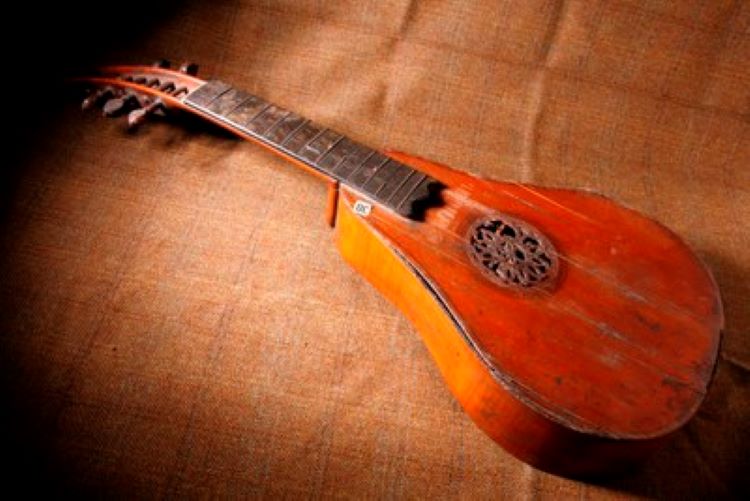In a previous post, Soundyngs reviewed James Porter’s recent monograph, Beyond Fingal’s Cave: Ossian in the Musical Imagination (2019). In this book, Porter mapped the impact of James Macpherson’s Ossian poems on subsequent music, and demonstrated how images of Ossian shaped both how Scots see themselves and how they have been seen by others. In a recent article published in the Journal of Folklore Research, Porter adds to what we know about the networking activities of Scots in London associated with the so-called ‘Temple of Apollo’, who used music to refashion Scottish cultural identity for their contemporary times, creating hybrid musical publications in the process.
One such work, and the subject of this essay, was James Oswald’s The Pocket Companion for the Guittar (n.d.) Just as Macpherson’s publications claimed to have translated oral material into print, so Oswald’s compilation presented purchasers with material that suggested an oral-to-print pattern of transmission. The title of this book draws attention to different national repertoires, from Italy, France, England and Scotland, and that these have been adapted for the “English” guitar. Nine ‘songs’ in the collection, all labelled as ‘plaintive’, use texts from Macpherson’s Ossian, and appear with both music and lyrics. The sources include Macpherson’s ‘Songs of Selma’, ‘Oina-Morul’, ‘Cath-Loda’, and Temora, but as the article makes clear, Oswald tells the reader that the music comes not from any printed source but was “taken from Mr Mc.Pherson’s (sic) singing by Mr Oswald” (p.28). The Ossianic epic concept is hereby repackaged as short art songs in accordance with fashionable tastes, the choice of texts selected tellingly being those voicing female laments for fallen heroes.
Porter suggests a date sometime in 1763-4 for Oswald’s book, following the publication of Macpherson’s Temora in March of 1763. Any live performance by Macpherson might have been associated with a visit to London to publicise that work, the latest in his sequence of Ossianic poetry. In 1764, Macpherson departed for West Florida, to work as a secretary for the Governor of the British colony there; after a year in America, he returned to London in September 1765. It is also possible, of course, that Oswald heard him after he returned, but Porter argues on balance for the earlier window of opportunity.
Charles Burney later wrote that he had heard Macpherson sing ‘some forty years ago’ at the house of the Earl of Eglinton, ‘in the Erse language’, melodies he had heard his mother singing as a child. Burney contributed some of these songs to Abraham Rees’s Cyclopedia, or, Universal Dictionary of Arts, Sciences and Literature (1819) as examples of Scottish Gaelic music. Porter suggests that this puts the original occasion of Macpherson’s singing within the social circle that included James Boswell and Samuel Johnson – the latter, famously, cast aspersions on the authenticity of MacPherson’s translations. Porter suggests that songs contributed by Burney to this later 1819 publication in fact were more likely to have been gathered from those printed in Oswald’s Pocket Companion rather than reconstructed by Burney from memory many years after the event.
Transposed, fragmented, “Englished” in translation, and packaged for an instrument (the “English guittar”) associated with lowland-Scots female, amateur performance, we can see Ossianic epic transformed and re-gendered. Porter concludes, “the songs, conceived at a time of metropolitan suspicion of North British immigrants, may still be seen, not only as a strategy to sell more copies of The Pocket Companion or to interest a new audience in the poems of Ossian, but also as a uniquely creative gesture in the face of cultural assimilation.” (p.57)
Further Reading
- “Robert’s Guittar”, Robert Burns’s “English Guittar”, Robert Burns Birthplace Museum Blog, (January 16 2014)
- James Porter, ‘Transcribing Voices, Fashioning a Genre: Orality, Hybridity, and Inventiveness in Oswald’s Songs from Ossian’ in Journal of Folklore Research (Indiana University Press), v59(1), (January-April 2022), 25-57
- Rob MacKillop, “The Guitar, Cittern and Guittar in Scotland: An Historical Introduction up to 1800″, in Gitarre und Zister: Bauweise, Spieltechnik und Geschichte bis 1800 ed. Lustig (Michaelstein: Blankenburg, 2004), 121-48
- Ian Woodfield, “Songs My Mother Taught Me: New Light on James Macpherson’s Ossian”, Journal of the Society for Musicology in Ireland 16 (2021), 3-32

